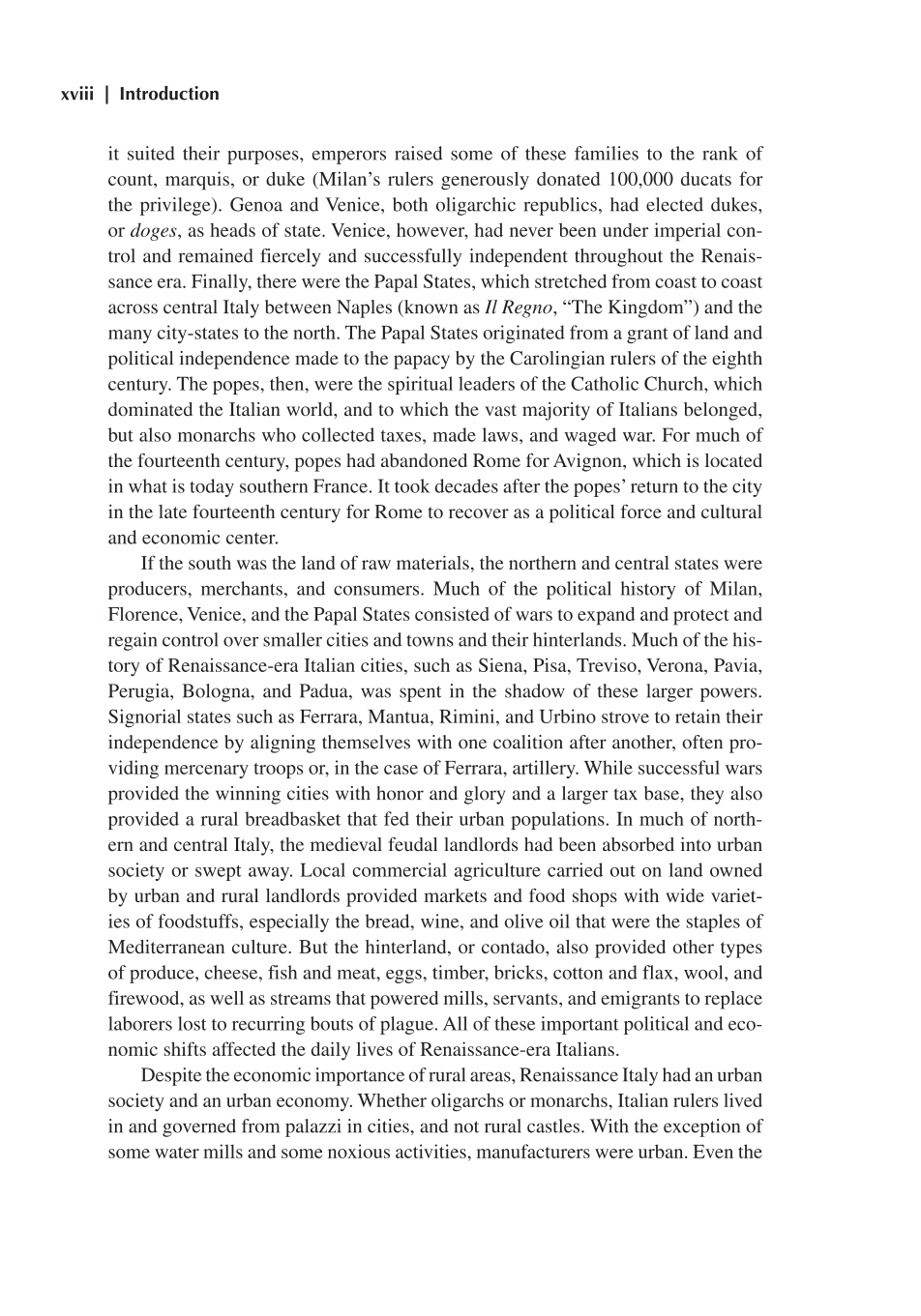Introduction xviii
it suited their purposes, emperors raised some of these families to the rank of
count, marquis, or duke (Milan’s rulers generously donated 100,000 ducats for
the privilege). Genoa and Venice, both oligarchic republics, had elected dukes,
or doges, as heads of state. Venice, however, had never been under imperial con-
trol and remained fiercely and successfully independent throughout the Renais-
sance era. Finally, there were the Papal States, which stretched from coast to coast
across central Italy between Naples (known as Il Regno, “The Kingdom”) and the
many city-states to the north. The Papal States originated from a grant of land and
political independence made to the papacy by the Carolingian rulers of the eighth
century. The popes, then, were the spiritual leaders of the Catholic Church, which
dominated the Italian world, and to which the vast majority of Italians belonged,
but also monarchs who collected taxes, made laws, and waged war. For much of
the fourteenth century, popes had abandoned Rome for Avignon, which is located
in what is today southern France. It took decades after the popes’ return to the city
in the late fourteenth century for Rome to recover as a political force and cultural
and economic center.
If the south was the land of raw materials, the northern and central states were
producers, merchants, and consumers. Much of the political history of Milan,
Florence, Venice, and the Papal States consisted of wars to expand and protect and
regain control over smaller cities and towns and their hinterlands. Much of the his-
tory of Renaissance-era Italian cities, such as Siena, Pisa, Treviso, Verona, Pavia,
Perugia, Bologna, and Padua, was spent in the shadow of these larger powers.
Signorial states such as Ferrara, Mantua, Rimini, and Urbino strove to retain their
independence by aligning themselves with one coalition after another, often pro-
viding mercenary troops or, in the case of Ferrara, artillery. While successful wars
provided the winning cities with honor and glory and a larger tax base, they also
provided a rural breadbasket that fed their urban populations. In much of north-
ern and central Italy, the medieval feudal landlords had been absorbed into urban
society or swept away. Local commercial agriculture carried out on land owned
by urban and rural landlords provided markets and food shops with wide variet-
ies of foodstuffs, especially the bread, wine, and olive oil that were the staples of
Mediterranean culture. But the hinterland, or contado, also provided other types
of produce, cheese, fish and meat, eggs, timber, bricks, cotton and flax, wool, and
firewood, as well as streams that powered mills, servants, and emigrants to replace
laborers lost to recurring bouts of plague. All of these important political and eco-
nomic shifts affected the daily lives of Renaissance-era Italians.
Despite the economic importance of rural areas, Renaissance Italy had an urban
society and an urban economy. Whether oligarchs or monarchs, Italian rulers lived
in and governed from palazzi in cities, and not rural castles. With the exception of
some water mills and some noxious activities, manufacturers were urban. Even the








































































































































































































































































































































































































































































































































































































































































































































































































































































